How to Differentiate Your Product
Fighting the forces of product inertia
Overcoming the fear of thinking differently
Suggesting different ideas or challenging conventional wisdom requires a certain level of tenacity. It also requires you to bulldoze through the fears that often beset the management mindset.
In many organisations, managers don’t want to be seen to rock the boat. Managers want Q2’s bonus and to please their superiors. Pursuing unconventional differentiation strategies risks making them look like fools to their superiors and so it’s often decided that to stay safe is a much better course of action.
This is all completely understandable. Who on earth wants to pursue some wacky idea, only for it to fall flat with their name written all over it? Nobody.
Why product differentiation matters
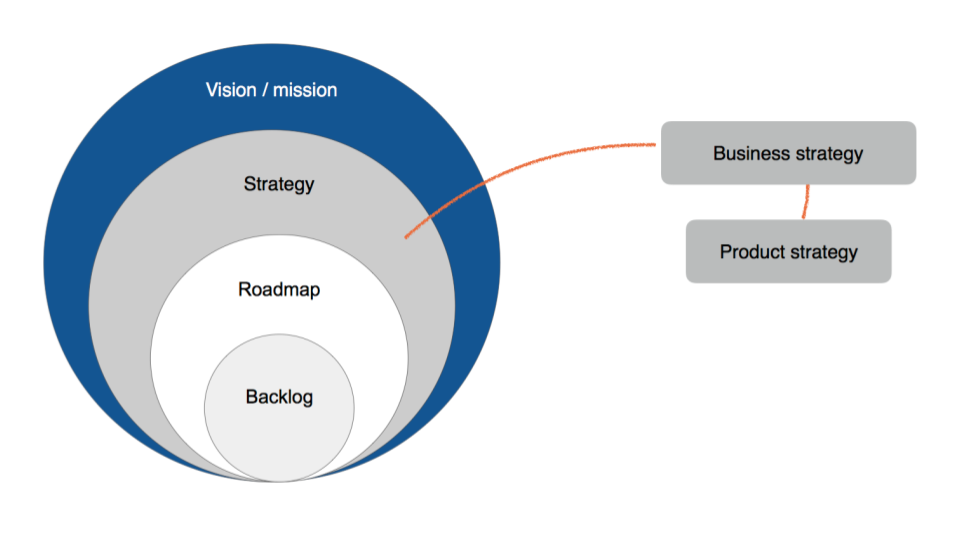
Product strategy is underpinned by the increasingly rare skill of making clear choices. Choices are difficult, because they inherently mean saying yes to one thing and no to another. No to customer requests, no to stakeholders and no to the niggling monster in your head suggesting you add just 1 more feature.
Perhaps one of the most important choices you make at the strategic level is to decide on what basis your business or product will compete. The classical choice is to decide whether to compete on price – and the subsequent race to the bottom – or whether to differentiate your product enough so as to carve out a unique space in which to operate.
Competing on price is made easier if you have the scale and resources to take on – and defeat – competitors since you can, in some cases, absorb losses and drive your competitors out of business. Few companies are in this position which makes differentiation a more attractive, powerful path to success for many products.
The benefits of differentiation
- Perceived value – battling on price lumps you into the same categories as your competitors. Differentiation elevates you to a new level of originality. It gives you leverage to potentially increase your pricing because you’re different and cannot be compared easily to alternatives.
- Competition – operate in the same space as competitors with no distinct differentiation and you are forced to compete on price. Carve out your own space and customers will see you differently – and assess you differently.
- Mindspace – being different means you occupy a different mindspace with your customers. You are seen as original – and are categorised alongside other original brands. Differentiation can help you shift the perception of your product from within the boundaries set by existing market players and into uncharted, alternative territories.
How do you differentiate your product?
Differentiation is difficult. And it often becomes more difficult the longer you operate within your industry.
If you’ve ever moved from one industry to another, you’ll come to the table with a fresh perspective, completely unblemished by years of ‘relevant’ experience. You’ll question why certain things are done in specific ways, you’ll wonder what would happen if you applied some of the principles from your previous industry into this new industry and you’ll think some aspects of this new industry are insane. After a few months, this beginner’s mind starts to fade until eventually you too get up to speed and become part of the industry in which you now operate. Things are as they are and that’s the way it is.
Differentiation challenges you to not succumb to these forces of inertia. Here’s a few ways you can do it:
1. Distort your industry factors
Ask yourself what factors and characteristics the key players in your industry compete on and what factors influence the products in your industry. For example, if you operate in the banking space, you might list the following as industry competing factors and characteristics which influence products in your market:
- Price of fees for transactions overseas
- Communication methods – by letter, email
- The services available e.g. Banking mobile app, overdrafts
To create a differentiated product in this market, your challenge is to distort these factors in unique, creative ways so that you create a new form of value.
To distort industry factors, ask yourself the following questions:
- Eliminate – which of the factors that the industry takes for granted could be eliminated?
- Reduce – which factors could be reduced well below the industry’s standard?
- Raise – which factors could be raised well above the industry’s standard?
- Create – which factors could be created that the industry has never offered?
An example of a company that has done just that in the banking space is Monzo.
How Monzo distorts traditional banking industry factors
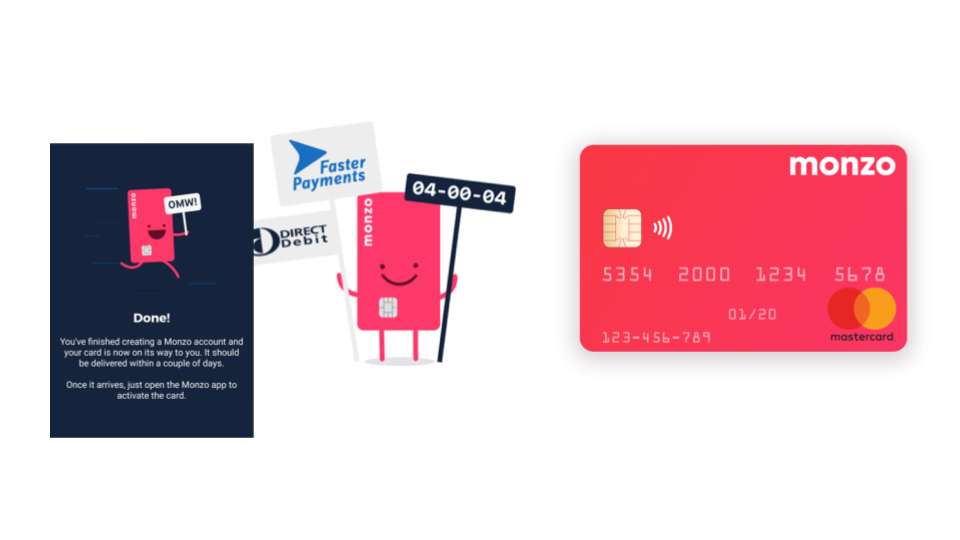
You may or may not have heard of Monzo. Monzo is a breakout banking startup based in London and it’s making a bit of a name for itself. The London tech scene is full of folks who proudly carry the Monzo card and at least some of Monzo’s success so far is driven by a very clear distortion of traditional banking factors.
Here’s some of the choices they’ve made which distort the traditional banking industry factors to create a new product category:
- Eliminated – all fees for using bank cards overseas, paper communications
- Reduced – bureaucracy and 20th century clutter associated with banking – having to write a letter to change accounts, for example
- Raised – focus on technology / engineering community by building open APIs for the development community
- Created – positive emotional relationship with your bank through branding – colorful cards / branding / sense of style and desire in banking. Banks had traditionally been seen as dull, boring, functional products. Monzo is transforming the emotional state associated with banking to create a powerful brand.
Monzo is transforming the emotional relationship it has with its customers by creating a community of brand ambassadors who flaunt their bright coral cards as a status symbol; not necessarily in the wealth-flaunting Amex way but as a symbol of being at the forefront of technology. Much like someone would do back when Macbooks were cool.
Suddenly brightly colored bank cards are all the rage. And I want one.
Monzo is transforming the relationship customers have with their banks from being a relationship akin to a colleague at work to a trusted relationship you might have with a long time university friend. The tone feels friendly, trustworthy and honest and not stuffy, forced and functional.
A series of bold strategic choices to differentiate its product has enabled Monzo to do this; the bright colored cards, the real-time updates on the mobile app, the emphasis on transparency with customers and the tone of voice is all very different to what’s traditionally expected in banking. The distortion of industry factors creates this feeling of originality.
Whether this is sustainable as it continues to grow remains to be seen but its bold, creative choices at the start of its life should be applauded.
The Remarkable tablet
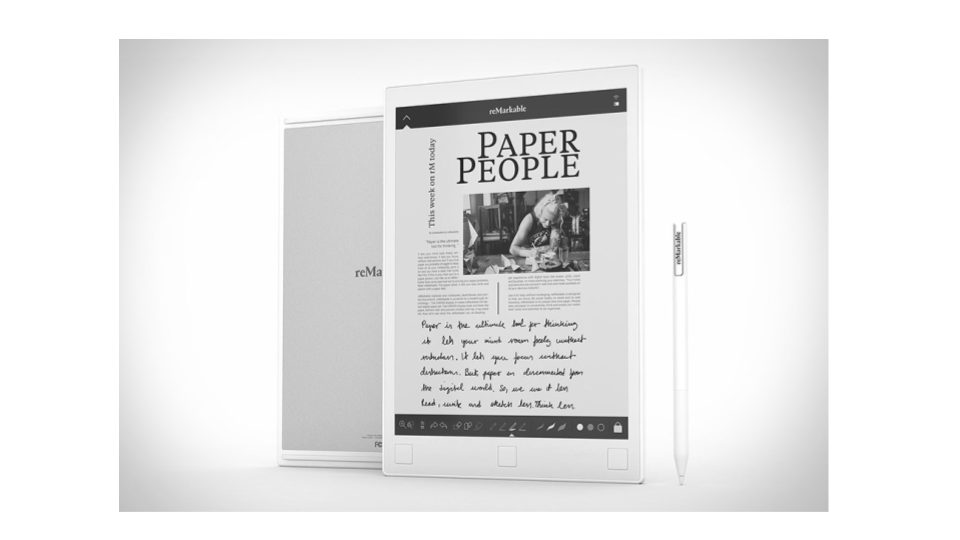
The Remarkable tablet is a new tablet focused exclusively on 1 thing: recreating the experience of drawing and writing on paper for the digital era. To achieve this, it makes a very clear series of strategic choices which distort the traditional industry factors and characteristics of the tablet industry:
- Eliminated – distraction. The problem with tablets and other mobile devices is that they put you in a constant state of distraction. Focus requires eliminating the sources of distraction.
- Created – a drawing slate for pencils, replaceable styluses and nibs. The Remarkable tablet comes with a series of replaceable nibs which fit onto the end of the digital stylus. This is a new concept and it evokes an emotional response similar to replacing the pens you might use with a notepad.
- Reduced – functionality. You can only do 1 thing on a Remarkable tablet; make notes and annotations. You cannot watch Netflix – and that’s a good thing.
- Raised – sex appeal of writing. The Remarkable creates the sense that drawing and writing is sexy again. For a while, writing on traditional paper was seen as old fashioned but the act of writing is now enjoying a renaissance, much of which is driven by products like the Remarkable.
2. Assess your value chain
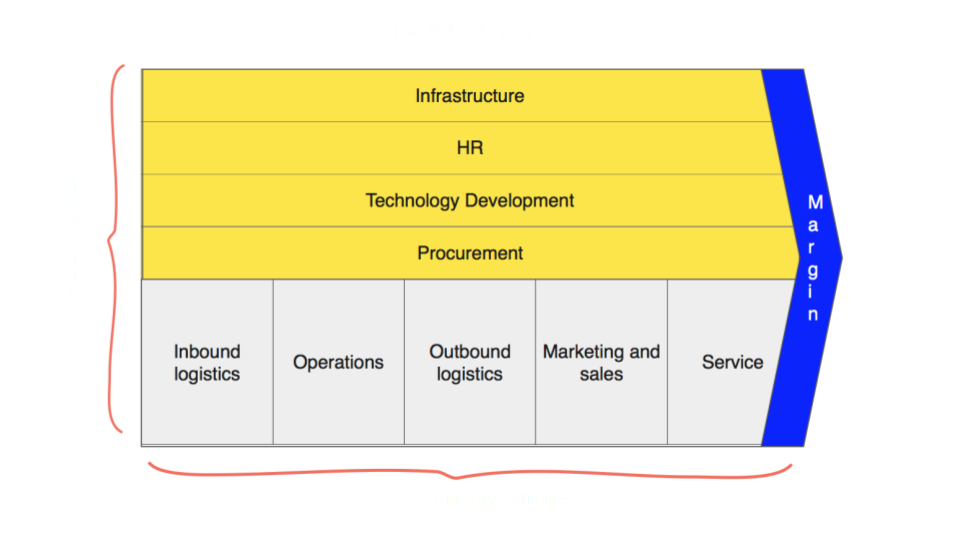
The value chain is the set of activities required to deliver the value of your business. If you’re a startup, it’s likely your value chain will be sparse in the early days which will mean you’ll need to rely on factors such as networks, reputations and humans to try and gain a foothold in your industry.
For more established corporates, your value chain will include everything from your HR departments, to operations, technology and customer service. Carefully examining your value chain will help you to identify unique, sustainable advantages over your competitors.
For example, Ikea’s strongest differentiator is its ability to sell flat pack furniture at rock bottom prices. The flat pack furniture designs, the infrastructure and the brand all come directly from the value chain.
Differentiators which are derived from sources of strength in your value chain are often more difficult to replicate by your competitors since they reflect the unique characteristics of your organisation which means they can sometimes be stronger long term sources of differentiation.
If you’re putting together an upcoming product strategy, look across your business as a whole to identify sources of strength that might act as levers to create product differentiators. Speak to members of other departments, get to understand what tools other parts of the business are using and how value is delivered in different ways.
3. Lateral applications
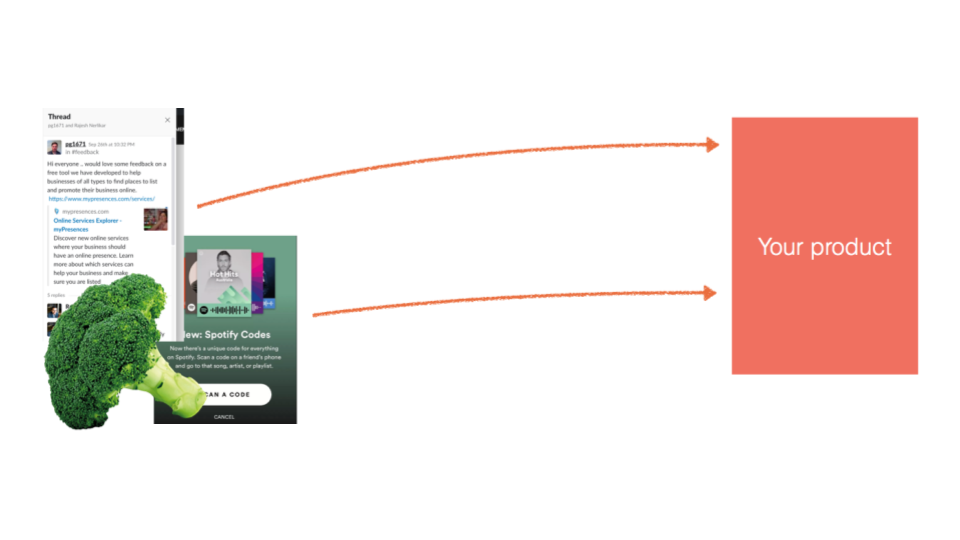
Creativity is the process of combining 2 seemingly unrelated concepts or ideas together. Differentiating your product can often work by taking unrelated concepts and applying them laterally to your industry or product.
Lateral application can sometimes work by stealing features and applying them to your product vertical. This doesn’t work if you steal features from within your vertical. Instead, look outside of your industry for ideas and apply them to yours. For example if you work in the fashion ecommerce space, you might look to the SAAS analytics sector for ideas on how to create new, differentiated features for your product. You might find that SAAS analytics products have APIs which allow reporting tools to extract data and that in your sector ecommerce fulfillment centers might benefit from something similar.
The process of lateral application is about forcing connections between completely unrelated concepts and is difficult to do at first but gets easier with a little practice.
The dynamism of differentiation over time
You’ve put together a truly differentiated product, your customers love it, your competitors are dumbfounded as to how to compete with you and so you sit back for the next five years and pour yourself a stiff drink to celebrate. Right?
The problem with differentiation is that it doesn’t always last forever. It’s a dynamic force which changes over time thanks to industry trends, responses from your competitors and advancements in technology. What’s different and potent today might be ordinary and impotent tomorrow.
Differentiators derived from your unique value chain can make replicating your product’s successes more difficult for your competitors but feature-based differentiation is far less resilient.
Today, Ebay is still generating billions in profits decades after it launched and much of this can be attributed to its solid value chain; replicating the powerful marketplace of buyers and sellers, logistical operations and international brand value is extremely difficult for competitors. It takes a monstrous juggernaut like Amazon to even come close to dislodging it as the defacto marketplace for connecting buyers and sellers. Feature-based differentiation, with weaker value chain foundations on the other hand, are much easier to destroy.
How Snapchat lost its differentiators
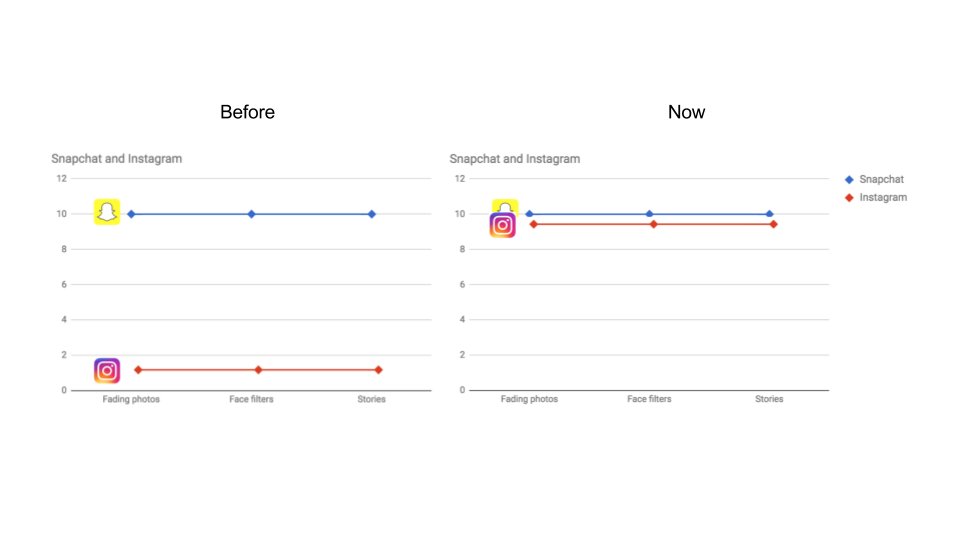
Just a few years ago, Snapchat was the darling of the tech world thanks in part to its seemingly powerful differentiators: the disappearing photographs and the hilarious face filters. Fast forward just a few years and the strength of these differentiators have been tested to their limits. And broken.
Today, these are no longer differentiators and the company is now seeking alternative ways to differentiate itself, with little luck so far. Product features alone cannot withstand the pressure of sustained competition. Instagram has proved this all too ruthlessly as it continues to bludgeon Snapchat to death, one feature at a time.
There’s often a misplaced sense of trust that consumers will buy into a company just because you’re still that company. That’s partly true for a few brands but for many companies customers are increasingly more fickle and will happily switch between products, depending on which brand offers the best, easiest or most original form of value. Many users switched from Snapchat to Instagram without giving it much thought.
Does everything need to be differentiated?
Differentiating everything is not a good idea, particularly when it comes to elements of UX. Often, it’s useful to stick to conventional design trends and design patterns to avoid confusion. That’s not to say you shouldn’t try experimental design approaches but that sometimes you can differentiate to the point where nobody has a clue what they’re meant to do with your product because it’s utterly confusing to use.
The responsibility of differentiation
Differentiators should ideally be decided at the strategic level, with product decisions flowing from these. Strategy is about making clear decisions. Differentiation is one way in which this decision making might manifest itself. Decide on a few key differentiators when you’re working on your product strategy. Depending on your organisation this might be quarterly or annually.
Then, with your differentiation choices made, specific product features can flow from these decisions. Cohesion is important throughout the business and a strategic decision to be different in 1 area should be reflected in the product decisions you make. For example, if you’re a banking company which has decided to be different by having an open, honest, transparent relationship with customers, this can permeate throughout your organisation and manifest itself in various different ways. Your CS team might have 24 / 7 mobile live chat tools, you might build a transparent roadmap and you might have a forum for members of your community to chat to both your company and each other.
As a product person, you can shape the ways in which your products reflect your overall business and product strategy by making feature decisions which align clearly with the overall strategy.
How to get your organisation to embrace differentiation
Embracing differentiation, especially within larger organisations is often difficult. There’s a number of reasons for this. Here’s some of the hurdles that you’ll need to overcome if you want your organisation to embrace thinking differently:
- The repeaters
- HiPPO influence
- Embarrassment
The repeaters
Who are the repeaters? Repeaters rarely think for themselves and instead look to others for answers so that they can repeat them to colleagues and other team members. Often, if you’re tackling a problem, a repeater will look to how others do it in your vertical and suggest you copy your competitor. To be clear, this is not always a negative; in UX in particular, using well-established design patterns can be a great thing. We all think like repeaters sometimes, but if you’re explicitly ideating ways to differentiate your product, the repeater mindset is not one to emulate.
HiPPO influence
The HiPPO (highest paid person’s opinion) will sometimes rule the roost in larger corporates. If business’ differentiators are decided at the strategic level this can often mean that it’s HiPPOs who are making these decisions. It’s important therefore for HiPPOs to gather input from all parts of the business so that strategic decisions that are made at a higher level take into consideration feedback from non-HiPPOs too too. VC billionaire Marc Andreessen actively encourages his members of staff to challenge every idea he has. We can all learn a lot from this approach.
Embarrassment
What are you afraid of saying? At the heart of many poor differentiation strategies is the fear of looking or sounding like an idiot. It’s much easier to point to a competitor and copy what they’re doing since the fact that they’re doing it means you feel safer. This deep sense of embarrassment affects staff members at all levels.
The only way to combat the fear of thinking differently is to create an environment where ideas are exchanged, criticised and praised openly. It’s difficult at first but after a while you’ll genuinely stop caring what people think and celebrate good ideas and bad.



